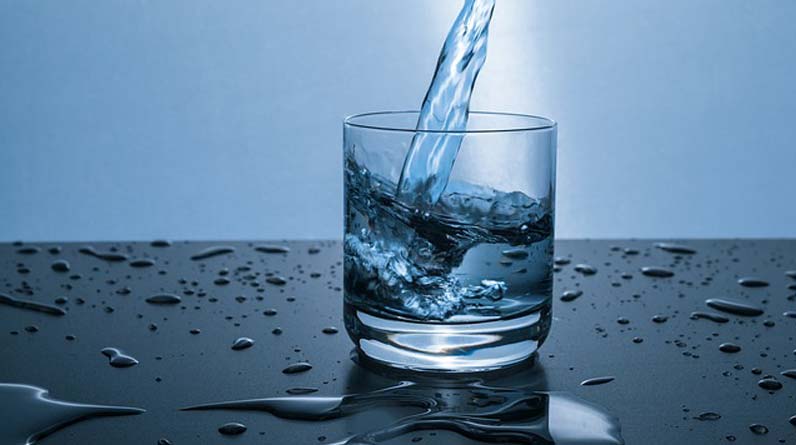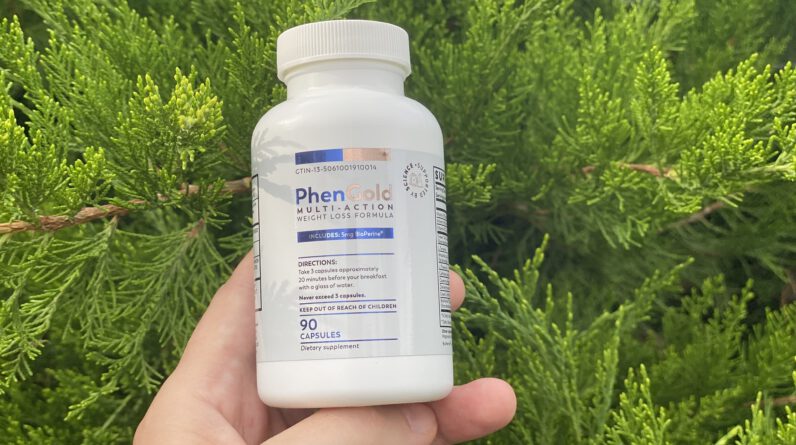
WHY WATER IS AN IMPORTANT WORLD RESOURCE
After air, without which we cannot survive for more than a few minutes, water is our second most essential natural resource. Our planet is the only one with enough water to support life as we know it and our atmosphere locks it to the surface. Other planets, which we think may have had water, lost it when their atmosphere was lost.
97% of all the earth’s water is salt water and only 3% is freshwater. Humans need to drink fresh water to live. Most living things, plant, and animal are composed of mostly water. Water is also an integral part of our body systems. Digestion, elimination, cardiac, lymphatic and immune systems all require water to operate.
In addition, water is used by business and industry as part of their processes. For example, we use water for hydroelectric power and for irrigation to grow the crops we eat.
An interesting fact is that we have nearly the same amount of water that the earth began with. The amount of water is relatively stable. What is of concern though is that the amount of usable water is diminishing. Some locations have no access to water, whether surface water or groundwater, so the people must transport water into those areas to their cities. Runoff pollution makes the locally available water undrinkable without elaborate filtering and processing. Still, other areas have polluted groundwater or sea water and must filter their water for use.
Another problem is that almost 75% of the freshwater is frozen in the ice caps and in glaciers and is not accessible. When that ice melts it will dissolve into and become part of the sea water. Other areas are experiencing drought due to global warming, and it is making the weather unpredictable.
Marshes and swamps which filter water and send it back into underground reservoirs are being reclaimed to build cities. Growing cities are in a constant need for water to be tied up in concrete which is not reclaimable, further limiting the water supply. People who live in the cities need potable water for living and for doing business. Manufacturing uses a lot of water. As does irrigation of fields for growing food.
Water is an important world resource because all life hinges on it and our culture uses it to feed us and build our cities. Making the most of our water supply and keeping it clean for future generations is one of the most important things we can do as a global venture.
HEALTH BENEFITS OF WATER
Your body is made up of mostly water. You use water in your body for various processes like digestion, transport of nutrients, and to make up the volume of your blood. You create saliva and excrete urine all with the help of water. You also lose water through excretion: when you go to the bathroom and when you sweat. Water helps your bowels function properly. It keeps things moving along and if you get dehydrated, you will become constipated. Your body loses huge amounts of water each day that must be replenished.
Besides drinking water, you can get water from your meals and snacks. Water is in every food, and in drinks like soda, tea, and coffee. You are thirsty even if you don’t feel thirsty yet. When you start feeling thirsty it is too late, you are already getting dehydrated. You are continuously losing water through skin evaporation and in the vapor you exhale. Dehydration occurs when your water intake does not match your water output. The weather also affects your water balance, if it is hot, you will sweat more. If you exercise, you sweat and exhale water more than normal. And that goes for your kids as well.
What can you do to keep hydrated and avoid complications related to becoming dehydrated? The answer is simply to drink more water. If you drink straight water, and not a beverage with stuff in the water, you will be giving your body the very thing it needs. Water is able to be delivered straight into the bloodstream from your stomach. It does not have to be digested as a beverage would, and then be filtered through your liver and released by your kidneys. Pure water is the quickest way to get water into your body so it can go to work where it is needed.
If your mouth and lips are dry, you need to drink some water. Another way to check if you are getting sufficient water in your diet is to check the color of your urine. After your first urine of the day, the rest should be clear or very pale yellow and odorless. If not, you need more water intake.
Even though science has denounced the standard 8-10 glasses of water a day rule, we still need at least 5 glasses of pure water in addition to any beverage we consume, every day. If you work out or have a busy schedule, you will need more. By keeping a bottle of water with you at all times and sipping from it throughout your day, you can keep on top of your bodily demands for water.
THESE TOXINS ARE HIDING IN YOUR WATER
Water toxins and contaminants are in your drinking water and you need to know which ones so you can take action to protect your family. Knowledge of which 3 groups of contaminants are in your water will help you find a solution. Take heart in knowing that there are many filtration systems are on the market today to solve your particular contaminant problem.
The first type is the Biological Contaminants. These all occur naturally in your water supply.
• Bacteria
• Viruses
• Parasites
• Molds
• Algae
The solution to getting rid of them is to use reverse osmosis systems (RO systems), water ozone systems, and pasteurization. They will remove some of these biological contaminants from the water supply
Organic Contaminants are in the next group. These are concentrations of certain chemical compounds made from mostly carbon and hydrogen.
• Benzene – used in building materials and a byproduct from gasoline use
• Chlorobenzene
• Trihalomethanes
• Pesticides/Herbicides – from agricultural runoff
• Chlorinated Compounds – from PVC pipes and a byproduct of water chlorination
• Petroleum Hydrocarbons – From oil refineries, gasoline spills, and gas service stations
• Decayed Plant & Animal tissue
• Plasticizers
A solution is to get rid of these undesired chemicals by using activated carbon filters, ultrafiltration reverse osmosis systems, KDF or kinetic degradation fluxation filters to remove chlorine, organic scavenging filters, and ozone injection systems.
Last are the Inorganic Contaminants which are elements or compounds found in water supplies that occur either naturally in the geology of the land or through man-made activities such as mining, fracking, industry and agriculture.
Nitrates – can come from sources such as agricultural fertilizers that leach into groundwater. In non-farming areas, septic systems and cesspools are other common sources.
Arsenic – occurs naturally and from industrial and pesticide pollutants.
Asbestos – from eroding pipes.
Heavy Metals – these can occur naturally and also can come from eroding plumbing systems, automobile exhaust, industrial waste, fertilizers, and pesticides, brass water fixtures.
Radon Gas – this gas permeates groundwater and can become airborne when it seeps through the soil into tightly sealed homes.
Simple solutions are to aerate, filter and purify your water. Use Showerhead and bath filters. Install whole house water purification systems. Also, use unlined stainless steel or glass water bottles to drink and transport your water.
There are other toxins, too. Chlorine and DBPs – the disinfection byproducts used by water filtration companies in cleaning your drinking water at the source. These DBPs are over 1,000 times more toxic than chlorine. The best solution is to use ultrafiltration reverse osmosis systems for drinking and cooking and to shower with activated carbon filtered water.
WHAT TYPE OF WATER IS BEST TO DRINK?
There are numerous types of water available to us that we can use for drinking or just about anything else you would use water for. These water types include tap, spring, filtered, purified, distilled, reverse osmosis, and deionized. Here is a breakdown of the distinctions and best uses for these different types of water.
Tap water is basically water taken from a stream or river, or well, that is coarsely filtered through sand to remove large items in the water. Then a coagulant is added to make small particles stick together to be filtered out in a process known as flocculation.
The water is then disinfected using chlorine, to kill the bacteria and other micro-organisms. Then the water is tested for the final time and considered fit to drink. In the US most tap water will not make you sick and while some have an odor or flavor it’s harmless and due to where it’s sourced. For example, in some places, the water smells like sulfur.
This is the cheapest kind of water to drink, since it is free from your faucet, but is it the best for drinking? That depends on the temperature of the air, the temperature of the water, the season, and the source’s accumulated runoff and what factories are dumping into the source.
Spring Water is water that comes out of the ground in different locations. Springs feed our rivers and streams. Mainly groundwater that has filtered down through the ground and into underground repositories, spring water is often considered “pure water”. But that is not quite accurate because of today’s extensive pollution. Many contaminants have themselves filtered down into the underground layers and into the springs.
Spring water sold in bottles usually refer to themselves as “100% pure”, but that really means that they come 100% from a spring and not from a municipal tap as most other bottled waters do and do not refer to their purity levels. “Natural” is another word they use to describe spring water. It’s natural because it comes from the earth. Most spring waters today are equivalent to tap water purity. So you may want to investigate further before spending the higher price this bottled water demands.
Filtered water is just that – municipal tap water that is filtered through carbon filters to remove chlorine before bottling.
Purified Water is an up and coming segment in the bottled water industry. It is purer than other types of water such as tap water, filtered water, and spring water. To meet legal terms, it is filtered to remove more contaminants and to an extremely low level. It is a good option at an affordable price range.
Distilled water is run through a distillation process where it is boiled and the steam is captured and condensed back to a liquid as H2O. But there are many volatile organic contaminants with lower boiling points than water that will go with the steam and end up in the distilled water. Unless an additional filter is added to remove those, the water is not pure. Distilled water also has its minerals removed and this is why it is used for steam irons and steam mops.
Many times distilled water is used in detox programs because it has the ability to leach out minerals from our bodies and remove toxins. For that purpose, you can drink distilled water. However, it is not good to drink on a regular basis because of that very reason that it will leach out minerals in your body (such as the calcium in your bones and teeth) and bring on earlier death.
Reverse Osmosis water pushes water under pressure through a semi-permeable membrane to filter the water to remove molecules and ions. Most commonly used in desalination plants to remove salt from seawater for drinking. It is more expensive for home use, adds to the load of home septic systems by expelling non-filtered water, and makes the water acidic, which can harm the body over time.
Deionized water has the impurities and minerals removed from it but not the bacteria and microorganisms. The impure water is run through two columns, one filled with sodium hydroxide and the other filled with sulfuric acid. This enriches the water with sodium ions. Drinking it will lead to higher sodium in your body which may bring on health problems such as high blood pressure. It also lacks minerals and will act as a solvent in your body to leach out the minerals you have. Definitely not water for drinking. It is used mainly in chemical labs and in manufacturing processes.
If you really want pure water, coconut water is a good as it gets and it also contains electrolytes. Also, when you juice vegetables you are also getting the water they contained.
So, after going through the different types of water available to you, did any stand out to you? Did you say “This is the water I’m going to drink”? If so, you have made your decision. You can research more on your own if you have not made any decision yet. There really is no definitive type of water you should drink, it is a matter of your own choice and what is available in your area and what is affordable to you. You will have to add the cost of bottled water, or filters, into your household budget. Water and location and accessibility are all subjective to you. Make your own decision on what you will drink.
ALLERGIES, ASTHMA, AND WATER
Many allergy and asthma sufferers try to adapt their living environment to limit exposure to irritants that make them have an asthma attack. But most do not even think of filtering the water that they drink and bathe in, which is often loaded with chemical irritants that set off their asthma attacks. Many times it is the exposure to chemicals in tap water that causes or increases their sensitivity and brings about an allergic response, such as a runny nose, itchy eyes, and nasal congestion, or even a full-blown asthma attack, with constricted airways and breathing problems.
Chlorine is a major cause of sensitivity. Many allergy sufferers are sensitive to chlorine in swimming pools and should avoid the day chlorine is added. Even taking a hot bath or shower with the shower curtain closed will cause chlorine gas to build up enough to irritate your lungs and can bring on an asthma attack.
Chlorine exposure also causes dry, brittle hair, eye irritations, dry skin, dandruff, and general body itching and rash. Taking shorter showers will decrease your exposure to irritants in the water. So will soaping up without the water running. Lowering the temperature of the shower water helps because hot water opens your pores to absorb more chemicals and the heat increases steam inhalation into your lungs. Getting a filter for the shower will take out the chlorine and prevent these kinds of attacks.
Another chemical in tap water is Fluorine. Originally added to help prevent tooth decay in children, it causes extreme reactions in both adults, children, and infants who are sensitive to it. Allergic skin reactions and asthma attacks have occurred after being exposed. The World Health Organization, WHO, has even told most countries to remove it from their water supply.
Drinking purified water will help because the chlorine and fluorine is filtered out of the water. Dehydration itself is a factor in allergies and asthma attacks. Lack of water vapor causes the lungs to constrict and the lungs produce thick, sticky mucus when there isn’t enough water to thin it down. Drinking hot purified water and inhaling the steam will help give immediate relief when needed. Keeping properly hydrated will prevent most attacks caused by dehydration in the first place.
Drinking ten glasses of water is recommended for asthma sufferers specifically because of the importance of having enough water that their body needs. Adding a pinch of sea salt to the water and avoiding caffeine will also help. The salt helps with the body’s water regulation and the caffeine robs the body of water because it acts as a diuretic.







